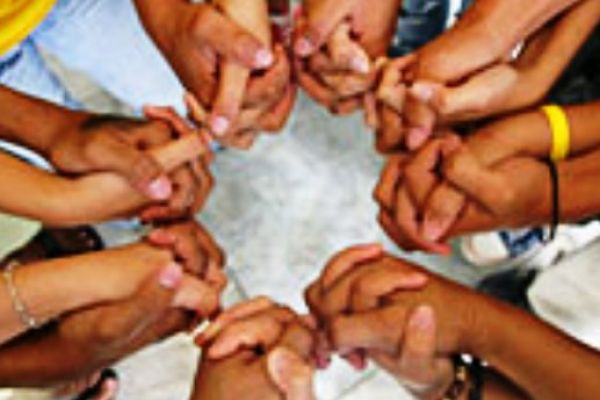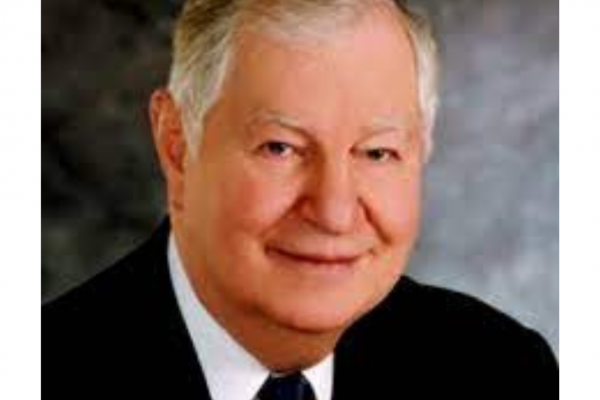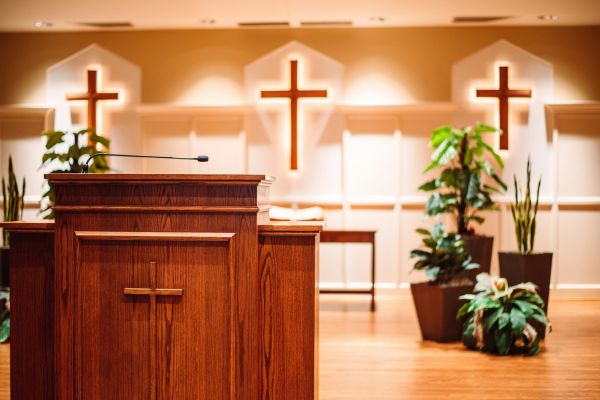Your Perspective is Limited- Here’s How to Change That
Your Perspective is Limited- Here’s How to Change That
Your Perspective is Limited- Here’s How to Change That
In September of 2022, our oldest son was called to be a Youth Pastor at a church in Alabama and moved out of our home in South Carolina. We waited the prerequisite 6 months before we decided he probably wasn’t coming back, at least not to stay. So this weekend we decided to paint his bedroom and turn it into more of a “guest room” space.
When he lived there, his room went through several transitions as his tastes changed. So yesterday, when we started the process of repainting the room, we knew it would need a little work. There would be a few holes to patch– just a couple of areas that probably needed putty and sanding.
But then we turned on the lights, took down some old décor, and started patching… And oh how wrong we were. See, what we couldn’t know was that these walls were covered with one hundred different holes as a testimony to his ever-changing decorations. Posters featuring athletes or video games had been hung with sticky tape a decade ago. Pictures and notes from his time as a camp staffer had been thumbtacked all over the room. Floating bookshelves that were meant to hold a few trophies had strained under the weight of old textbooks and pulled loose from the wall. And at one point, he hung old skateboards on the walls with screws and nails.

This is the ACTUAL room in my house. It looks like we have decided to polka-dot it with putty. There are hundreds of tiny holes, and a few large ones that will require sheetrock repair. There is so much work to be done just to simply prep it for painting that the room may never actually get painted.
Sometimes when we begin replanting, we have the same issue– we don’t see what lies under the surface. This limited perspective means we don’t know how much we need to do to merely prepare for the process of changing.
The Fourfold Panorama
In one of the first Replant Bootcamp episodes, JimBob talked to Keelan Cook, the designer of the Fourfold Panorama for Replanting Churches. This tool is invaluable to replanters as they begin the work of bringing life back into their church.
Keelan notes there are three things that churches must know when they decide to begin the process of discovery that leads to revitalization: The Biblical Mission of the church, which is unchanging, the congregation itself, which may be different from where it was at its start, and the context in which the church exists, which is ever-changing.
The problem in most churches is that the pastor typically only knows and can articulate one of those perspectives. It takes a unique, multi-perspective approach to know where the “holes in the wall” really exist.
In his fourfold panorama approach, Keelan states: “Churches exist to bear witness to the glory of Christ through the making of new disciples from all nations. In order to do that, two big categories must be considered: the local church itself, and the context they are attempting to reach. Too often, people attempting to revitalize, plant, or replant a church do so with an eye on only one of these categories. That is always a recipe for disaster. It may, in fact, be why the church is in its current shape. It is possible to polish up a church real nice, and due to a lack of contextual understanding, create the fanciest obstacle to the gospel in a particular neighborhood.”
Many pastors and churches are simply “nose-blind” to their condition. They think they know how their church is viewed within the congregation and the community, but in reality, they may not “smell” as good as they think. What I mean is, sometimes we see ourselves the way we aspire to be, but an assessment from outside perspectives might prove that evaluation to be false. In order to begin collecting data for this assessment, a church must ask itself: Do the activities of the church match the needs of the community?
As Keelan points out in the podcast, “a community is more than a geographical location-it is also a moment in time.” Instead of thinking of your community like a rock in the field, think of the community more like a rock in the current of a moving stream– the surrounding community is most likely drastically different than when your church began and you’ll need to “exegete” the community in order to know the needs of your community and how to meet them.
The Four Perspectives You Need
In order for the church to begin a proper assessment of its current condition, some outside sources are necessary. You’ll want to get someone’s unbiased, external viewpoint to help you begin the process. Your local AMS or DOM is beneficial, but you could also ask a trusted pastor from a different church. You’ll also need members of your church on the team. Your team needs to be as diverse as possible, filled with new members, longtime members, and potential members. You may even want to include the perspective of members who’ve left the church and gone elsewhere.
For the fourfold panorama assessment of the church’s condition, you need to consider four angles (or perspectives), and you’ll want to consider several sources for each. First, you need the perspective of your church, both inside the church and outside the church. Then, you need the perspective of the context (or community) in which your church exists, both from the inside and the outside.
The insider church perspective is looking for signs of life in your church. They are looking to answer questions about the vitality of the church, spiritually, financially, relationally, and missionally. In the fourfold panorama approach, this information is found through church data like budget, bylaws, and its annual profile, and is typically something you can find through interviews and surveys of your current membership. Some questions this perspective is answering are:
- Does the congregation exhibit a vibrant faith, spiritual maturity, a commitment to prayer, and a love for God’s word?
- Does the congregation love one another? Is there a spirit of unity, or does the congregation exhibit signs of deep division?
- How are the church’s finances? Does the congregation still give and steward its money well?
- Does the congregation demonstrate a genuine concern for the lost? Are they attempting to make new disciples, especially in the church’s immediate community?
The outsider church perspective is searching for the reputation and witness of this gospel community. In other words, how does the outside world see the church? This is found through visitor surveys, asking other area pastors, and your AMS. Some questions this perspective is answering are:
- How do people in the community describe the church?
- Do visitors think the facilities are substandard? Do they think the church is closed?
- Does the church have a reputation for being divisive or friendly?
- What, if anything, do outsiders know about the church’s message?
- Do people think it is a Bible-believing church that loves people?
The outsider context perspective is searching for demographic and cultural data for the community where the church is located. This is found through census data, chamber of commerce information, even area websites. Some questions this perspective is answering are:
- How do members of the congregation view the immediate community where the church facilities are located?
- What are the populations and demographic trends?
- How do community leaders attempt to present the community to outsiders?
The insider context perspective is, according to Cook, often the most challenging to obtain. This perspective attempts to understand how the actual community residents view themselves, their community, and the world around them. It can be found through community interviews with business owners and residents around the church. Some questions this perspective is answering are:
- How do the residents view the community where they live?
- How do the residents describe themselves and their worldview?
- Are there competing narratives in this community? For instance, has gentrification created two opposing communities in the same location?
- What is the spiritual and emotional climate of the community?
Patching the Walls
Once you have a proper assessment of the true condition of your church, you will find there are places where you may need to repair some damage. This may be within the church in the form of reassessing your programs and your missional vitality to your community. As the shepherd of your church, it would be helpful to remind your congregation of the unbelievably beautiful calling of the Great Commission and to issue a call to rekindle their love for the community around them. You might have to have some difficult conversations about change and adaptation, and you may experience some of the Emotional Cycle of Change (see Podcast Episode 126 for details) as you guide your people through their fear or their reluctance to change.
You may also need to repair some damage in your community. Your church’s reputation may be smudged, and you might need to make some apologies for past behavior. There may be areas where the church will need to repent of its resentment toward its surrounding community and you will need to foster love and hospitality within your membership.
This work will be hard. But in the end, it will be worth it. Your church will have a new canvas, ready to be filled with the next great chapter of your church’s history.
Resources:
Keelan Cook’s Fourfold Panorama Assessment Tool
https://replantbootcamp.com/wp-content/uploads/PND_-Fourfold-Panoramic-Assessment.pdf
Mark Hallock’s Replant Roadmap
https://www.amazon.com/Replant-Roadmap-Congregation-Revitalize-Churches/dp/0998859729
Bob Bickford and Mark Hallock’s Pathway to Partnership

















